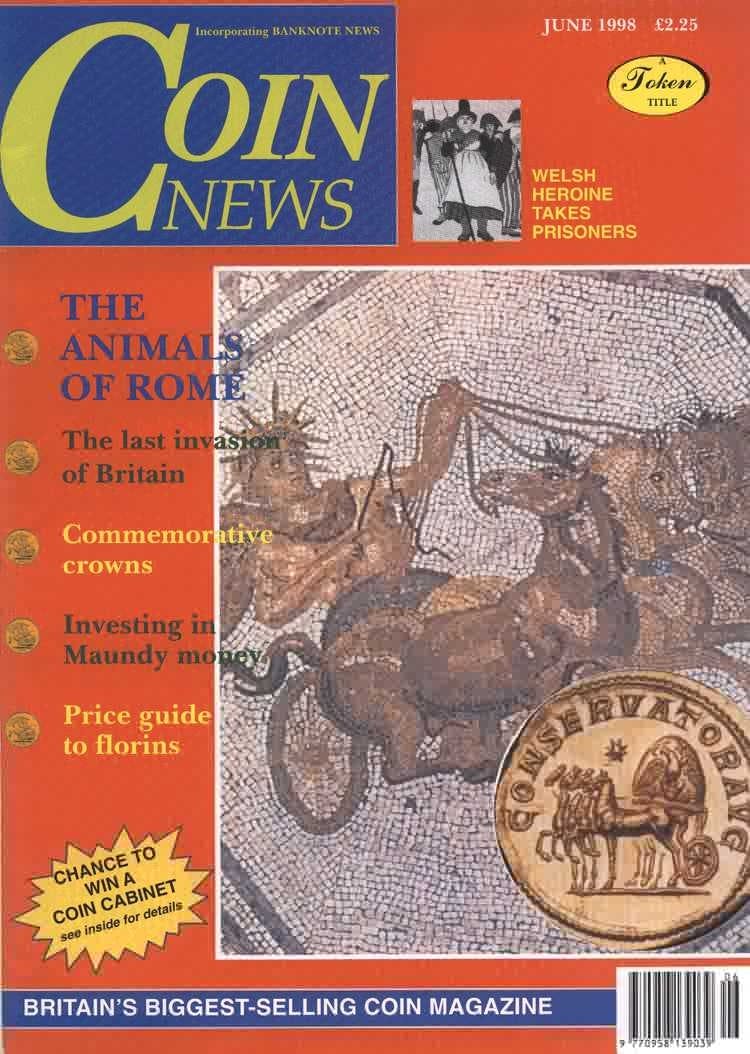SURFING THE NET
Volume 35, Number 6, June 1998
TOKEN PUBLISHING may be 15 years old but we are not sitting back and resting on our laurels. For example, we are injecting more colour into our publications. Hitherto this was confined to the front and back covers, but now we are making judicious use of colour on the inside pages. However, the technological advance which will, we hope, prove of greatest benefit to our readers in particular and numismatics in general is that we are now on the World Wide Web. By this means we feel that we will be able to reach an infinitely wider market, not just in the United Kingdom but all round the world. In internet-speak we are, of course, just a newbie, finding our way in netiquette (the code of conduct for users) and still getting accustomed to the arcane mysteries of e-mail, downloading software and communicating on-line. We used to think that numismatics had a language of its own, but the terminology of coin-collecting is straightforward compared with the argot of the Net. Now we are having to wrestle with applets and .archies, cookies, gophers and routers. We are making the acquaintance of Veronica (Very Easy Rodent-Oriented Network Index to Computerised Archives) and learning to distinguish between real time and virtual reality. We are intrigued by emoticons-symbols which can be interpolated into text to express our feelings-but somehow we feel that these will never replace the subtlety of the written world. We were particularly appalled at the acronyms which offer a kind of shorthand. AFAIK (as far as I know) FAQ (frequently asked questions) IMHO (in my humble opinion) leave me ROFL (rolling on the floor laughing). WYSIWYG (what you see is what you get). So from me and my SO (significant other) it's OAO (over and out). CUL8R (see you later). Not since we studied the cryptic inscriptions on the coins of our Hanoverian monarchs have we encountered such an apparently jumbled mass of letters. Seriously though, we can heartily recommend the internet to all our readers. If you have an IBM-compatible PC. Windows 95, a modem and a telephone line, the accumulated knowledge of the world is literally at your fingertips. This technology seems so advanced to us that we are amazed to discover that it has been around for almost 30 years, having been developed by the US Department of Defence in 1969 as a world-wide military computer network. The civilian applications evolved in the early 1980s-roughly about the time we were starting Token Publishing, in fact.
Order Back Issue
You can order this item as a back issue, simply click the button below to add it to your shopping basket.

